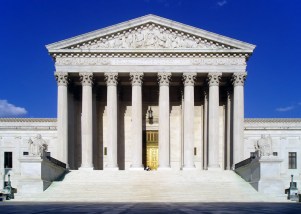The U.S. Supreme Court delivered a surprising blow to pandemic restrictions on house of worship in a late night order barring the enforcement of New York Gov. Andrew Cuomo’s Oct. 6 “Cluster Initiative” limiting attendance at religious services. Five justices (including newly installed Justice Amy Coney Barrett) blocked the limits while allowing the United States Court of Appeals for the Second Circuit to hear the merits in the case. Notably, Chief Justice John Roberts voted with the liberal justices but only because he felt that the order was not needed since the plaintiffs were not currently subject to the most severe limits.
Five conservative justices – Clarence Thomas, Samuel Alito, Neil Gorsuch, Brett Kavanaugh and Barrett – sided with the religious groups while Chief Justice John Roberts, along with Justices Stephen Breyer, Sonia Sotomayor and Elena Kagan, dissented. Notably, this is the first major ruling where Barrett’s addition to the Court was determinative as the swing vote. If Ruth Bader Ginsburg was still on the Court, this would have gone 5-4 in favor of New York.
The initiative created color-coded limits on mass gatherings and business operations with houses of worship in designated red zones limited to 25% of their capacity or 10 people, whichever is fewer. The area around a “red” zone is designated an “orange” zone with limited of 25 people and the area around that zone is designed “yellow” with limits up to 50% of a building’s maximum capacity.
The diocese filed with the Supreme Court on Nov. 12 and synagogues followed suit on Nov. 16. Notably, however, Cuomo then maintained that these parties were in the yellow zones and thus not hit by the harsher limits.
That fact clearly persuaded Roberts who saw no reason for the Court to intervene before the Second Circuit ruled on the merits. He wrote that “Numerical capacity limits of 10 and 25 people, depending on the applicable zone, do seem unduly restrictive. It is not necessary, however, for us to rule on that serious and difficult question at this time.”
Justice Brett Kavanaugh pushed back and noted that there is “no good reason” not to act now since these houses of worship could return to the more restrictive zones and, if they did not, the court’s rulings “will impose no harm on the State and have no effect on the State’s response to COVID–19.”
“At the same time, the Governor has chosen to impose no capacity restrictions on certain businesses he considers “essential.” And it turns out the businesses the Governor considers essential include hardware stores, acupuncturists, and liquor stores. Bicycle repair shops, certain signage companies, accountants, lawyers, and insurance agents are all essential too. So, at least according to the Governor, it may be unsafe to go to church, but it is always fine to pick up another bottle of wine, shop for a new bike, or spend the afternoon exploring your distal points and meridians. Who knew public health would so perfectly align with secular convenience?”
He then added:
“It is time — past time — to make plain that, while the pandemic poses many grave challenges, there is no world in which the Constitution tolerates color-coded executive edicts that reopen liquor stores and bike shops but shutter churches, synagogues, and mosques.”
“As noted, the challenged restrictions raise serious concerns under the Constitution, and I agree with JUSTICE KAVANAUGH that they are distinguishable from those we considered in South Bay United Pentecostal Church v. Newsom, 590 U. S. ___ (2020), and Calvary Chapel Dayton Valley v. Sisolak, 591 U. S. ___ (2020). See ante, at 1, 3–4 (concurring opinion). I take a different approach than the other dissenting Justices in this respect. To be clear, I do not regard my dissenting colleagues as “cutting the Constitution loose during a pandemic,” yielding to “a particular judicial impulse to stay out of the way in times of crisis,” or “shelter[ing] in place when the Constitution is under attack.” Ante, at 3, 5–6 (opinion of GORSUCH, J.). They simply view the matter differently after careful study and analysis reflecting their best efforts to fulfill their responsibility under the Constitution.”
Justice Sotomayor also seemed to push back on the framing:
“Free religious exercise is one of our most treasured and jealously guarded constitutional rights. States may not discriminate against religious institutions, even when faced with a crisis as deadly as this one. But those principles are not at stake today.”
The order is obviously encouraging news for those challenging these pandemic orders that they could have a 5 or even 6 justice majority on such limitations. This case could make it back to the Court after the Second Circuit ruling, though much could change on these pandemic orders in the coming weeks to moot the case.
Here is the order: ROMAN CATHOLIC DIOCESE OF BROOKLYN, NEW YORK v. ANDREW M. CUOMO, GOVERNOR OF NEW YORK

